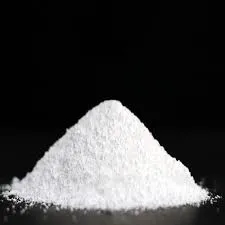The Uses of Anionic Polyacrylamide A Versatile Polymer
Anionic polyacrylamide (APAM) is a type of synthetic polymer widely recognized for its versatility and effectiveness in various industrial applications. This water-soluble polymer is primarily used as a flocculant, coagulant, and thickening agent, making it an essential component in multiple sectors, including wastewater treatment, mining, agriculture, and oil recovery.
1. Wastewater Treatment
One of the most significant applications of anionic polyacrylamide is in the treatment of wastewater. APAM helps in the removal of suspended solids and organic matter from water, effectively enhancing the efficiency of sedimentation processes. When added to wastewater, the anionic charges of the polymer interact with positively charged particles, causing them to clump together, or flocculate. This process results in larger aggregates that can be easily removed during the sedimentation phase, thereby improving water clarity and reducing pollutants.
In municipal wastewater treatment plants, the use of APAM has been shown to facilitate the processing of sludge, allowing for better dewatering and volume reduction. By enhancing the performance of filtration systems, APAM contributes to more sustainable water management practices, especially in urban settings where water resources are under significant pressure.
2. Mining Industry
In the mining sector, anionic polyacrylamide plays a crucial role in the processing of minerals. The polymer is often used in the flotation process to improve the recovery of valuable minerals from ores. By acting as a flocculant, APAM aids in the separation of minerals from the gangue, leading to a higher yield of the desired products. Furthermore, its thickening properties are beneficial in the preparation of slurries, optimizing the efficiency of mineral extraction operations.
Additionally, the use of APAM in tailings management has gained attention. Tailings—the waste material left after the extraction of valuable minerals—can pose significant environmental risks. Employing anionic polyacrylamide helps in binding the fine particles in tailings, reducing dust emissions and the potential for water contamination, thereby supporting more environmentally friendly mining practices.
anionic polyacrylamide uses

In agriculture, anionic polyacrylamide is utilized for soil erosion control and improving soil moisture retention. When applied to soil, APAM enhances aggregation, which helps in preventing soil erosion caused by wind and water runoff. This is particularly beneficial in arid and semi-arid regions where soil degradation is prevalent.
Moreover, APAM can be mixed with irrigation water to enhance water retention in soil, reducing the need for frequent irrigation. The polymer forms a gel-like structure that retains moisture, allowing crops to thrive even during dry spells. By improving water use efficiency, anionic polyacrylamide contributes to sustainable agricultural practices, promoting better crop yields while minimizing resource consumption.
4. Oil and Gas Recovery
The oil and gas industry also exploits the properties of anionic polyacrylamide for enhanced oil recovery (EOR). APAM is used in polymer flooding techniques, where it is injected into oil reservoirs to increase the viscosity of water, improving the sweep efficiency of oil recovery. The presence of APAM in the injection water helps in mobilizing trapped oil, leading to higher production rates while reducing the environmental impact associated with traditional extraction methods.
Conclusion
Anionic polyacrylamide is a multifunctional polymer that has demonstrated its usefulness across various industries. From enhancing wastewater treatment processes and improving mineral recovery in mining to supporting sustainable agricultural practices and boosting oil recovery efforts, APAM plays a pivotal role in modern industrial applications. As the demand for environmentally friendly practices grows, the importance of polymers like anionic polyacrylamide will continue to increase, paving the way for more innovative solutions in tackling global challenges related to water management, resource extraction, and agricultural sustainability. With ongoing research and development, the potential applications of anionic polyacrylamide are expected to expand even further, solidifying its status as a crucial material in various sectors.

